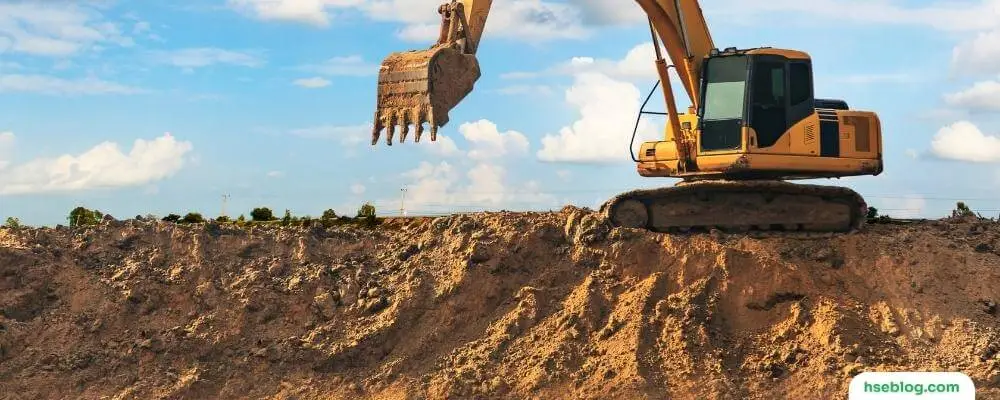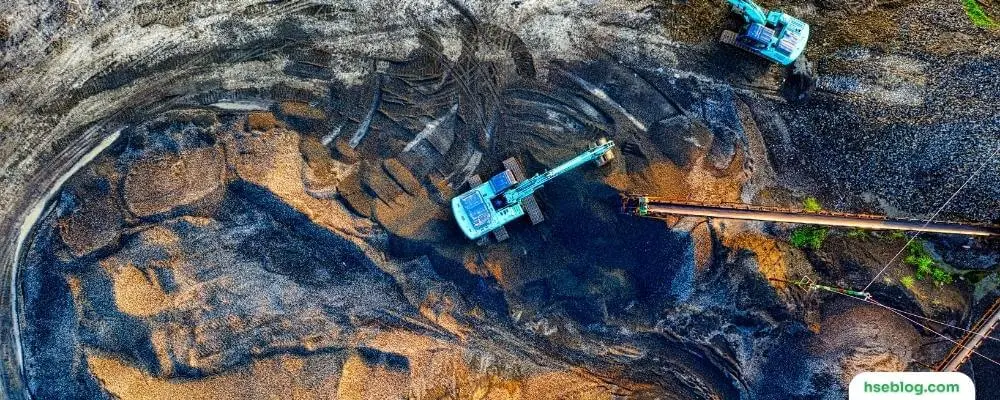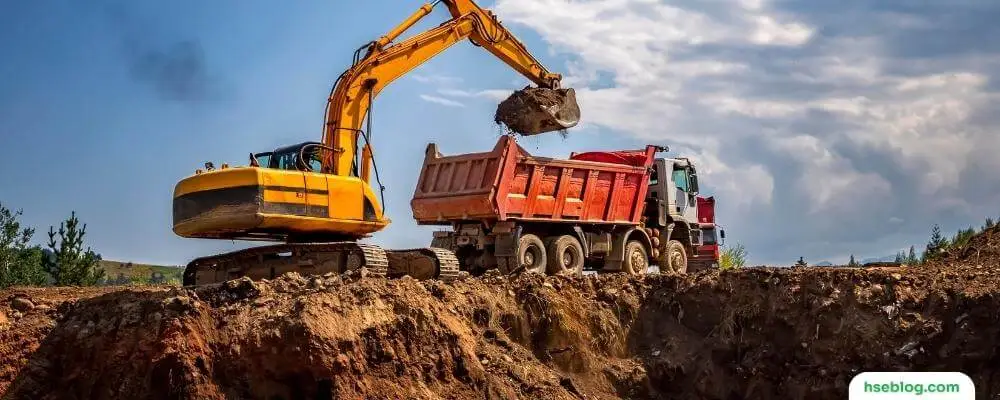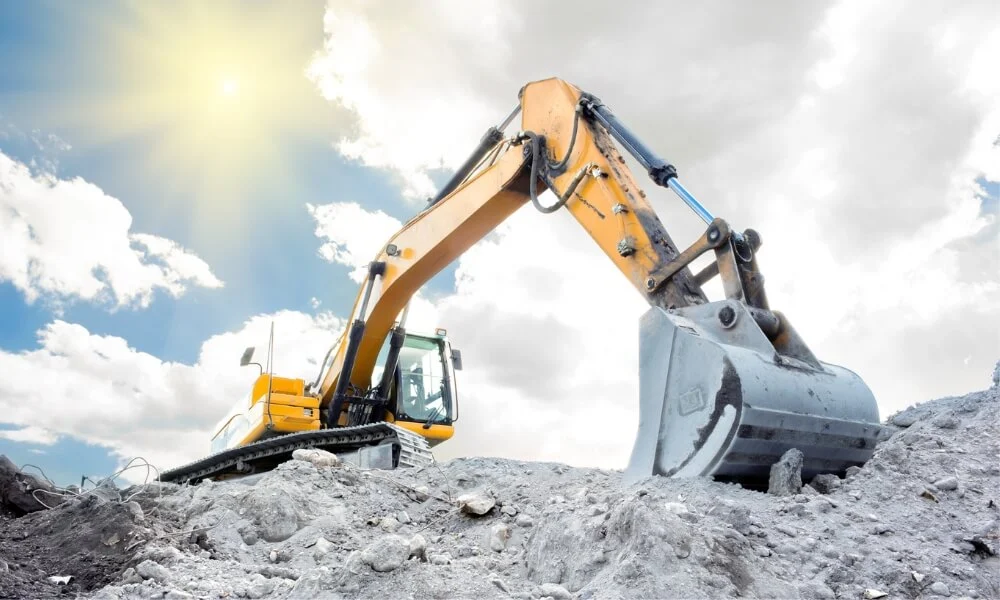Excavation is an essential process in construction projects that involves the removal of soil, rocks, and other materials from a site to create a foundation or prepare it for building structures. The excavation process requires heavy equipment and skilled workers to ensure that the job is done safely and effectively. Different types of excavation techniques are used in construction, each with unique advantages and disadvantages.
In this blog, we will discuss 8 different types of excavation techniques used in construction and their applications. From trenching to basement excavation, this blog will provide a comprehensive guide to help you understand the different excavation methods used in the construction industry.
What Is Excavation And Its Importance
Excavation is a crucial construction process involving the removal of soil, rock, or other materials from a site to create a specific area or cavity for constructing various structures, such as buildings, bridges, tunnels, and roads. The process is carried out using various tools, equipment, and techniques depending on the project’s size, depth, and complexity. Excavation is a vital part of the construction process for several reasons:
- Site preparation: Excavation helps clear and level the construction site by removing obstacles such as vegetation, rocks, and debris. This enables the construction team to work on a clean and stable surface, ensuring the foundation and other structural elements are built on solid ground.
- Foundation construction: For any structure to be stable and durable, it needs a strong foundation. Depending on the project requirements, excavation creates the necessary space to construct foundations, such as footings, piers, or slabs. A properly excavated site allows for the correct placement of these foundations, ensuring the long-term stability and safety of the structure.
- Utility installation: Excavation is essential for installing water, sewage, gas, and electrical lines. Trenches are dug to accommodate these utilities, ensuring they are protected and function properly throughout the structure’s lifespan.
- Drainage and erosion control: Proper excavation helps design and implement efficient drainage systems, minimizing the risk of water damage and erosion around the construction site. This is particularly important in areas prone to heavy rainfall or flooding.
- Access and transportation: Excavation can be used to create access roads, pathways, or ramps to transport materials, equipment, and personnel during the construction process. This improves the project’s efficiency and helps ensure workers’ safety on site.
In conclusion, excavation is a vital aspect of construction that contributes to the overall success of a project. It plays a significant role in site preparation, foundation construction, utility installation, drainage and erosion control, and access and transportation, ensuring that structures are built on solid ground and function efficiently over time.

Types Of Excavation Used In Construction
Based on their purpose and the materials involved, several types of excavation are commonly used in construction. Here are some examples:
1. Topsoil Excavation
Topsoil excavation is an important excavation used in construction to prepare the ground for building. It involves the removal of the uppermost layer of soil, vegetation, and any other decaying material from the earth’s surface. This excavation aims to create a stable surface for the construction of foundations or other structural elements.
This excavation is typically done using heavy machinery such as excavators or bulldozers to remove the top layer of soil and vegetation. The excavation depth depends on the soil type and the construction project’s requirements. After the topsoil is removed, it is either stockpiled or removed from the site. The underlying soil is then leveled and compacted to create a stable surface for construction.
Topsoil excavation is particularly important in areas with poor soil quality or where the land has been previously used for other purposes. For example, if the land was previously used as a landfill site, topsoil excavation would be necessary to remove any contaminated soil or materials before construction can begin. Similarly, if the land is covered in dense vegetation, topsoil excavation may be necessary to create a level surface for construction.
2. Rock Excavation
Rock excavation is a type of excavation used in construction to remove rocky surfaces or boulders that impede the building process. Unlike other types of excavation, rock excavation is highly challenging and requires special equipment and techniques to clear the tough surface.
The process of rock excavation typically involves drilling, blasting, or using heavy machinery to remove the rock or boulders. The type of technique used depends on the size and location of the rocks, as well as the requirements of the construction project. In some cases, controlled blasting may break up large rocks into smaller pieces that can be removed more easily.
Rock excavation is important in construction as it allows for creating a level surface suitable for building. Failure to remove rocky surfaces or boulders can compromise the foundation’s stability and affect the structure’s overall safety. Rock excavation can also help prevent damage to heavy machinery used in construction, which can be expensive to repair or replace.

3. Muck Excavation
Muck excavation is used in construction to remove unwanted material known as muck, a combination of soil and water. Muck can be a hindrance during construction as it can create an unstable and unsuitable surface for building. As a result, it needs to be removed from the construction site.
The muck excavation process involves using heavy machineries, such as excavators or dredgers, to remove the muck from the site. The excavated muck is then moved to another area or spread out to dry. Once the muck has dried, it can be disposed of or used for other purposes, such as landscaping or fill material for other construction projects.
4. Earth Excavation
Earth excavation is used in construction to remove various soil layers to create a foundation for buildings, bridges, or drainage ditches. It involves the removal of the layer of soil below the topsoil for construction purposes.
The earth excavation process typically involves using heavy machineries, such as excavators or bulldozers, to remove the soil. The depth and extent of excavation depend on the construction project’s requirements and the soil’s nature. In some cases, earth excavation may be used to create a level surface for construction, while in others, it may be used to create a slope or a gradient.
5. Cut and Fill Excavation
Cut and fill excavation, or stripping excavation, is used in construction to clear large land areas. The process involves the removal of wide and shallow layers of topsoil, rocks, sand, and other unwanted materials. This type of excavation aims to level the ground to create a suitable surface for construction.
The cut-and-fill excavation is typically carried out using heavy machinery such as bulldozers or scrapers. The machinery cuts the soil and other materials from high areas and then fills the low areas to create a level surface. This process may also include grading the land to ensure the surface is leveled and compacted.
Cut and fill excavation is commonly used to construct highways, airports, and other large infrastructure projects. It is also used to develop residential and commercial properties to prepare the land for construction. The process is highly efficient, as it can clear large land areas quickly, creating a suitable surface for construction in a shorter amount of time.

6. Trench Excavation
Trench excavation is used in construction to create a long and narrow excavation where the length of the excavated area exceeds the depth. Trenches are typically used to bury service lines, install pipelines and sewer systems, or lay foundations. This type of excavation is suitable for shallow trenches of less than 6m or deep trenches of more than 6m.
The techniques used for trench excavation depend on various factors, such as the purpose of the trench, ground conditions, the number of obstructions, and so on. The excavation process involves using heavy machineries such as excavators, backhoes, or trenchers to remove the soil and create a narrow and deep trench. The width of the trench depends on the project’s requirements, and the sides may be shored up to prevent collapse.
7. Basement Excavation
Basement excavation is a type of excavation used in construction when a building is to be constructed partially or entirely below ground level. The basement is typically the area below the ground level, and the excavation process involves the removal of soil and other materials to create a suitable space for the construction.
Basement excavation can be a complex process, depending on the property’s size and the basement’s depth. The excavation process typically involves using heavy machinery, such as excavators or bulldozers, to remove the soil and other materials from the site. The depth and extent of excavation depend on the design of the building and the requirements of the construction project.
Basement excavation is critical in constructing buildings that require additional space below ground level, such as parking garages, storage areas, or living spaces. Proper basement excavation ensures that the foundation of the building is stable and secure and that the structure can withstand the weight of the building and any additional loads.

8. Dredging
Dredging is a type of excavation used in construction that involves excavating and removing sediments and debris from underwater areas. Over time, sediment deposits can build up underwater, making construction and passage difficult. The process of dredging is used to remove these sediments and debris to create a suitable space for construction or to allow boats and ships to pass easily.
Dredging typically involves using specialized equipment, such as dredgers or suction pumps, to remove sediment and debris from the underwater area. The sediments and debris are then transported to another location for disposal or reuse. The depth and extent of dredging depend on the construction project’s requirements and the underwater area’s nature.
Dredging is critical in constructing harbors, ports, and waterways as it allows for the safe passage of boats and ships. It is also used to construct bridges and other structures that require a stable foundation in underwater areas. Additionally, dredging can help prevent flooding and erosion at high water levels.
Conclusion
Excavation is a critical construction process involving removing various materials from the ground to create a suitable surface for the building. The eight types of excavation discussed in this blog include topsoil excavation, rock excavation, muck excavation, earth excavation, cut and fill excavation, trench excavation, basement excavation, and dredging.
While these are some of the most common types of excavation used in construction, there are many other types depending on the project’s specific requirements. Proper excavation is crucial in ensuring the stability and safety of the foundation of the building or structure being constructed.

